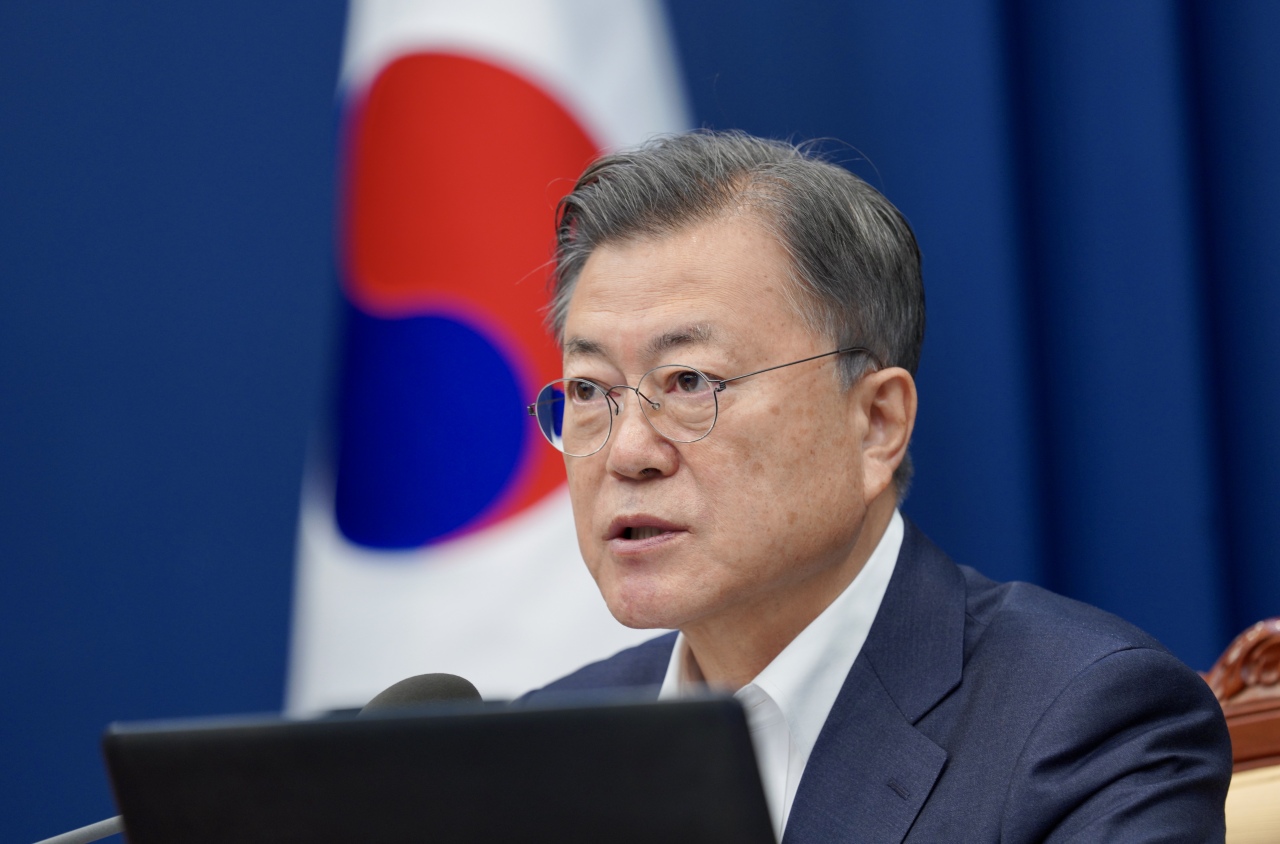Moon administration, Yoon transition team at odds over ending COVID-19 rules
KDCA says removing isolation precautions based on socioeconomic, not scientific, considerations
By Kim ArinPublished : April 21, 2022 - 15:59

The outgoing Moon Jae-in administration and President-elect Yoon Suk-yeol’s transition team are at odds over the future of South Korea’s COVID-19 policy.
The Moon administration’s COVID-19 response headquarters announced last week that starting April 25, COVID-19 will cease to be the most high-consequence infectious disease under Korea’s classification. The headquarters said as the disease’s legal status changes, all pandemic-related restrictions will be terminated with the exception of an indoor mask mandate after a brief grace period.
On Monday curfews for businesses and the cap on private gatherings were lifted completely after they were eased gradually since January. In May, isolation requirements for COVID-19-positive patients will also end, the headquarters said.
Moon said in a virtual Cabinet meeting on Monday, “I am deeply pleased that Koreans are able to get normal life back before the end of my term.” The president said Korea’s fight against the pandemic was “an example to the world,” and that his administration would “continue to do its utmost best so that Korea will lead the world in recovering normal life as well.”
Yoon’s transition team, however, says next month might be too early to lift COVID-19 isolation requirements altogether.
Ahn Cheol-soo, who is heading the presidential transition team’s COVID-19 task force, said in a statement Wednesday that the dangers of new variants and the possibility of another wave in the fall and winter still lingered.
“While going back to normal is important, there needs to be measures for protecting high-risk populations,” he said. “At this stage it’s risky to pretend like COVID-19 is gone.”
A senior Korea Disease Control and Prevention Agency official, Kim You-mi, told reporters during a closed-door briefing Thursday that doing away with isolation precautions was a “decision based on socioeconomic, rather than scientific, considerations.”
“This is the kind of approach Europe is taking. So far Korea has very rigorously contained the outbreaks through a strategy known as ‘3T,’” she said, which means extensive testing, treatment and tracing of cases. “Governments must also consider the social and economic consequences of pandemic policies.”
She explained that downgrading COVID-19’s threat status in Korea’s infectious disease classifications was “about eliminating legal grounds for requiring people with confirmed infections to isolate,” she said. “Individually we can continue to exercise precautions but there won’t be legal consequences for not exercising those precautions, like how we do with seasonal influenza.”
Kim said indoor masking will stay for some time.
“In summer indoor areas are kept air-conditioned and poorly ventilated. Masks are still needed at everyday facilities like public transits that are often crowded,” she said. “To protect high-risk groups indoor mask-wearing will continue to be mandated for a considerable period of time.”
She said whether to actually follow through with the plan to end isolation will once again be reviewed at the end of the two weeks’ grace period.
“We feel that our health care systems are ready for this transition. But depending on how variants and other variables affect the situation, the plan could be adjusted.”
Korea found its first cases of recombinant variants XE, XL and XM -- combining features of two omicron sublineages BA.1 and BA.2 -- in the last 10 days. XE, classified under omicron, may be about 10 percent more than transmissible than BA.2 that is currently dominant here, according to the World Health Organization’s initial analysis.
In the latest seven-day period Korea saw an average of 99,301 cases and 187 deaths daily, down from 171,537 cases and 282 deaths seen a week ago.
By Kim Arin (arin@heraldcorp.com)



















![[Today’s K-pop] Treasure to publish magazine for debut anniversary](http://res.heraldm.com/phpwas/restmb_idxmake.php?idx=642&simg=/content/image/2024/07/26/20240726050551_0.jpg&u=)